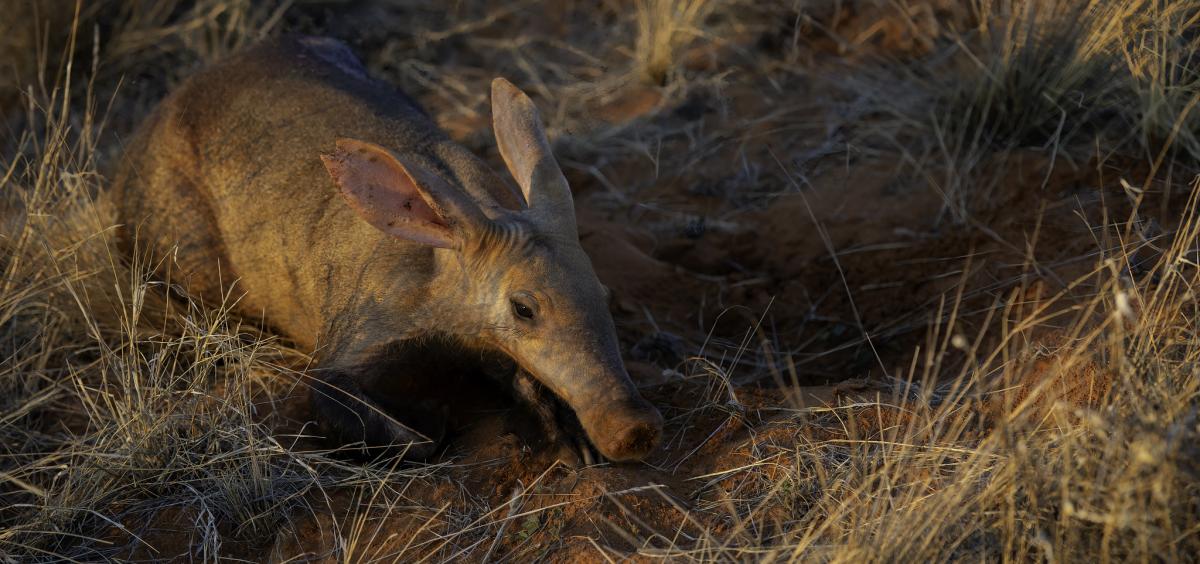
CORVALLIS, Ore. – In a first-of-its-kind study of aardvarks, Oregon State University researchers spent months in sub-Saharan Africa collecting poop from the animal and concluded that aridification of the landscape is isolating them, which they say could have implications for their long-term survival.
“Everyone had heard of aardvarks and they are considered very ecologically important but there has been little study of them,” said Clint Epps, a wildlife biologist at Oregon State. “We wanted to see if we could collect enough data to begin to understand them.”
In a just-published paper in Diversity and Distribution, the researchers used genetic information gleaned from 104 aardvark poop samples to begin to understand the range of where they live.
“During times of rapid environmental change, evaluating and describing changes in the landscape where a species lives is important for informed conservation and management decisions,” said Rachel Crowhurst, a wildlife geneticist who works with Epps and co-authored the paper.
Aardvarks are nocturnal, burrowing mammals that can weigh up to 180 pounds. They have long snouts, similar to that of a pig, that they use, along with their claws, to locate and dig out ant and termite hills. They are found over much of the southern two-thirds of Africa.
Despite often being compared to pigs and South American anteater, aardvarks are not related to them. Aardvarks are the only living member of the order Tubulidentata, and their most closely living relatives include golden moles, elephants and manatees.
The International Union for the Conservation of Nature lists aardvarks in the category of “least concern,” in part due to the broad range of ecosystems they inhabit. However, little is known about current population trends or their actual distribution across the landscape. The Oregon State researchers believe the species is understudied because they are nocturnal, hard to trap and exist in low densities across large and often remote landscapes.
Those factors led Epps to undertake the first study of the genetics of aardvarks in the wild and to develop noninvasive methods to do so. People have examined aardvark DNA in the past for studies of mammalian evolution, but never across wild populations.
Epps learned to recognize aardvark tracks and poop (which they bury) when working as post-doctoral researcher nearly 20 years ago in Tanzania. In 2016, during a sabbatical, he returned to Africa for six weeks to see if he could spot aardvark digging signs, track them through the bush and find their buried droppings.
“I wanted to work on a system that was understudied, where anything I learned would likely be truly new information to the scientific community,” Epps said. “I also wanted to work over large landscapes, on foot, alone or with a friend or with guards when needed, in protected areas, with minimal logistical support and little cost.”
He learned how to find their feces on that 2016 trip and returned for shorter trips in 2017 with a graduate student Rob Spaan and in 2018 with Crowhurst.
They surveyed eight protected and four privately owned areas in South Africa, two protected areas in Eswatini (formerly Swaziland) and a location in Kenya. They collected 253 fecal samples and analyzed 104 that were of the highest quality for genetic information.
They then used the genetic information to infer aardvark distribution and movement across the landscape. For example, if genetic testing showed that fecal samples collected in different spots came from the same aardvark, they then used this information to determine the scale of individual movements.
In South Africa, the genetic information they gathered suggested three regional divisions of aardvarks, indicating that animals in western, central and eastern regions of South Africa were somewhat isolated from each other. Individuals were detected at multiple locations separated by up to 7 kilometers, indicating that home ranges could be larger than previously determined, particularly in arid areas where food resources may be low.
Closely related individuals were detected as far as 44 km apart, and individuals less than 55 km were more genetically similar. Thus, they found aardvarks may disperse up to 55 km from where they are born. Across the study area, genetic differentiation between individuals was greater when intervening landscapes were more arid, suggesting that movement through those areas is restricted.
The researchers plan to continue the work and hope to perform genomic analysis on new samples and conduct field work across a wider area of sub-Saharan Africa.
“Our initial findings suggest that climate change will increase habitat fragmentation and limit gene flow for aardvarks, particularly where precipitation is expected to decrease and temperature increase,” Epps said. “With aridity expected to increase in southern-most Africa under most climate change scenarios, the need for further research is clear.”
Epps other hope for further research: to see an aardvark in the wild. That goal has eluded him.
The paper was also co-authored by Spaan and Matt Weldy of Oregon State and Hannah Tavalire of the University of Oregon.
About the OSU College of Agricultural Sciences: Through its world-class research on agriculture and food systems, natural resource management, rural economic development and human health, the College provides solutions to Oregon’s most pressing challenges and contributes to a sustainable environment and a prosperous future for Oregonians.
Sean Nealon, 541-737-0787, [email protected]
Clint Epps, [email protected]; Rachel Crowhurst, [email protected]
Click photos to see a full-size version. Right click and save image to download.